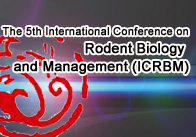Background Innovative new techniques that aid in the visualization of microscopic anatomical structures have improved our understanding of organismal biology significantly. It is often challenging to observe internal 3D structures, despite the use of techniques such as confocal laser scanning microscopy (CLSM), micro-computed tomography (Micro-CT), magnetic resonance imaging (MRI), focused ion beam scanning electron microscopy (FIB-SEM) and others. In the current paper, we assess LED-SIM (DMD-based LED-illumination structured illumination microscopy), which facilitates the acquisition of nano- and micro-3D structures of small organisms in a high-resolution format (500 nm in the XY-plane and 930 nm along the Z-axis). Results We compare other microstructural imaging techniques (involving conventional optical microscopy, CLSM and Micro-CT) with LED-SIM to assess the quality (e.g. resolution, penetration depth, etc.) of LED-SIM images, as well as to document the potential short-comings of LED-SIM. Based on these results we present an optimized set of protocols to ensure that LED-SIM arthropod and nematode samples with different cuticles or textures are prepared for analysis in an optimal manner. Six arthropod and nematode specimens were tested and shown to be suitable for LED-SIM imaging, which was found to yield high resolution 3D images. Conclusions Although LED-SIM still must be thoroughly tested before it is widely accepted and the Z-axis resolution still requires improvement, this technique offers distinct high quality 3D images. LED-SIM can be highly effective and may provide high quality 3D images for zoological studies following the guidelines of sample preparation presented in the current paper. http://frontiersinzoology.biomedcentral.com/articles/10.1186/s12983-016-0158-9
| |
 |
 |
|
